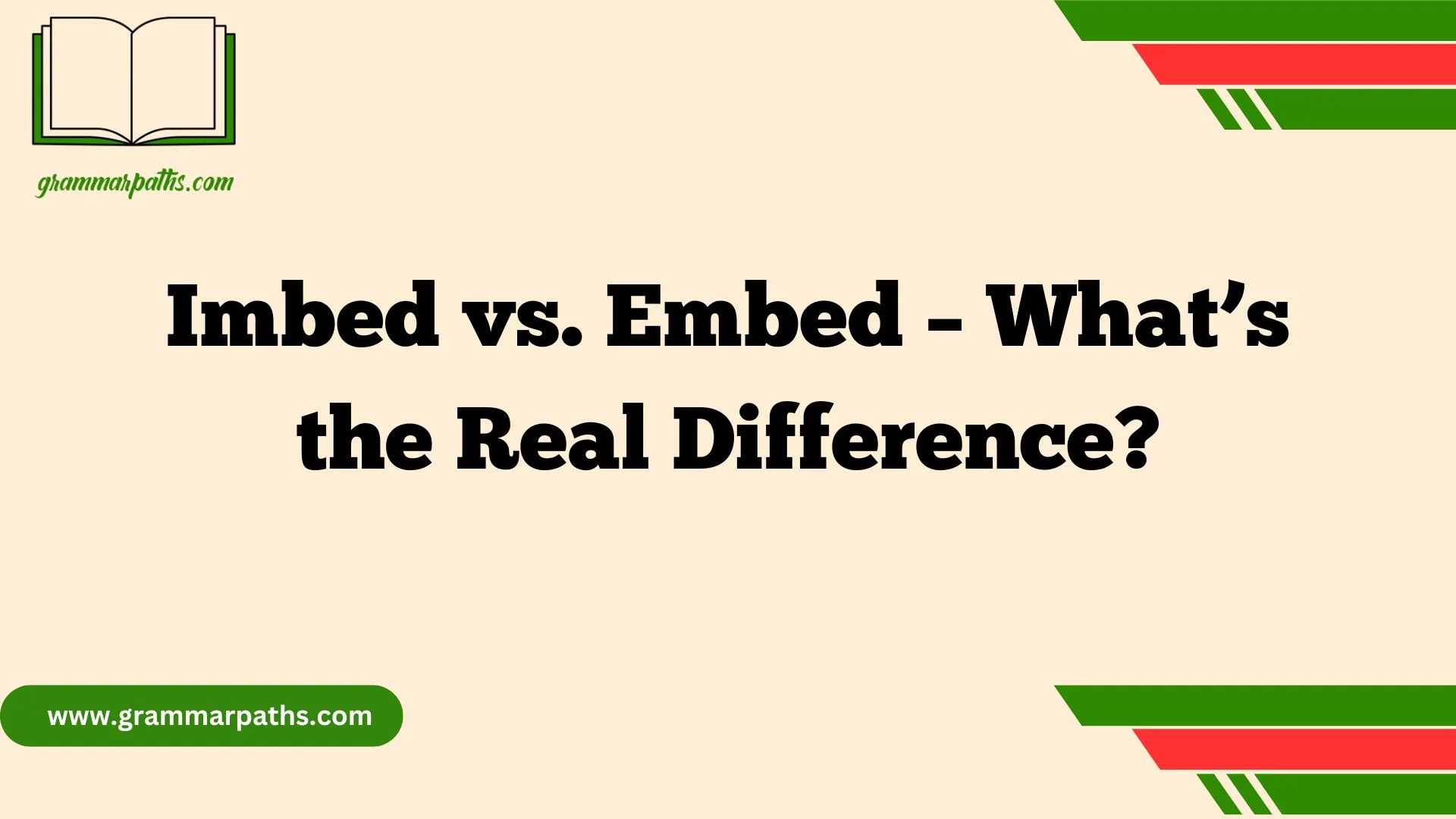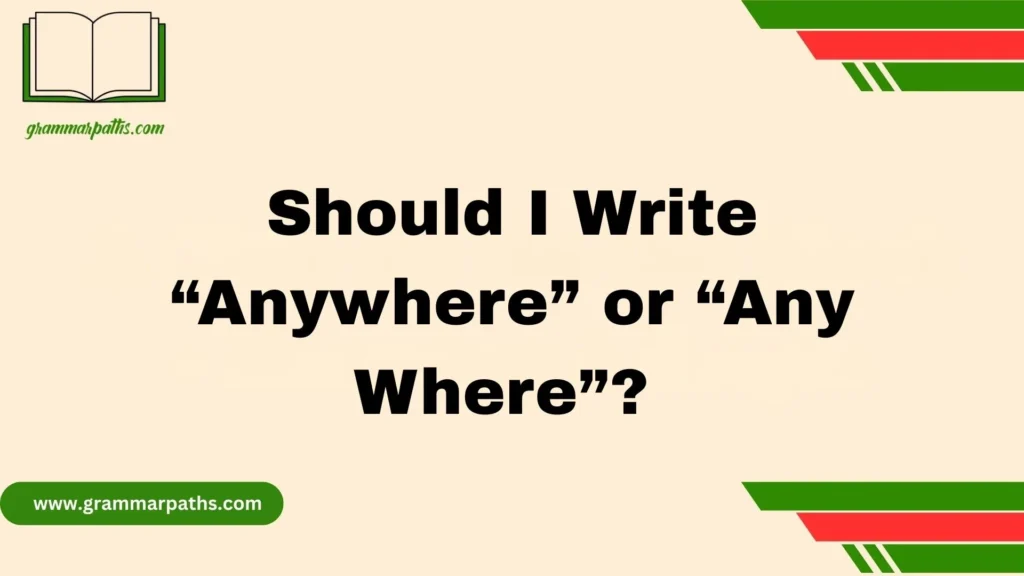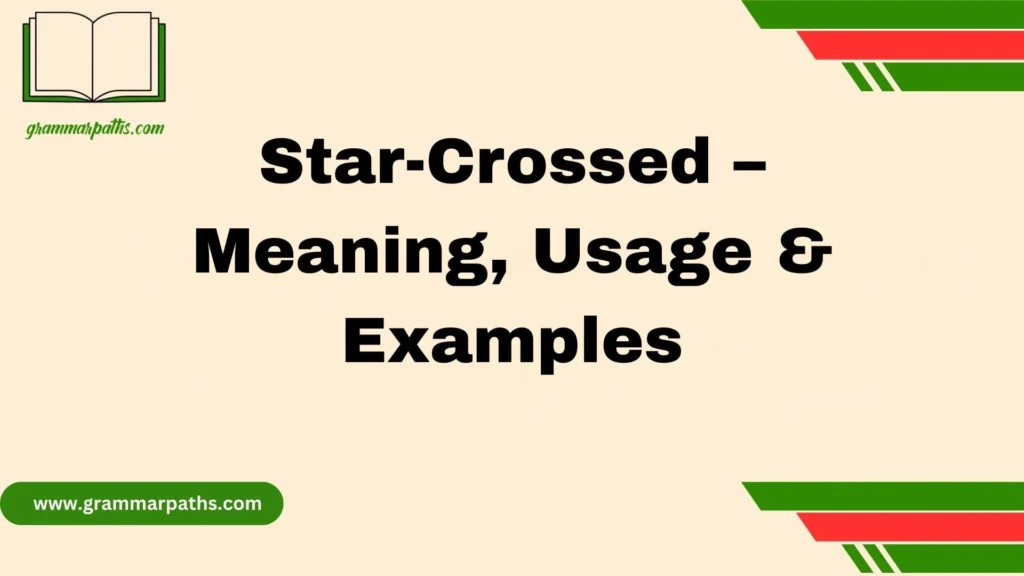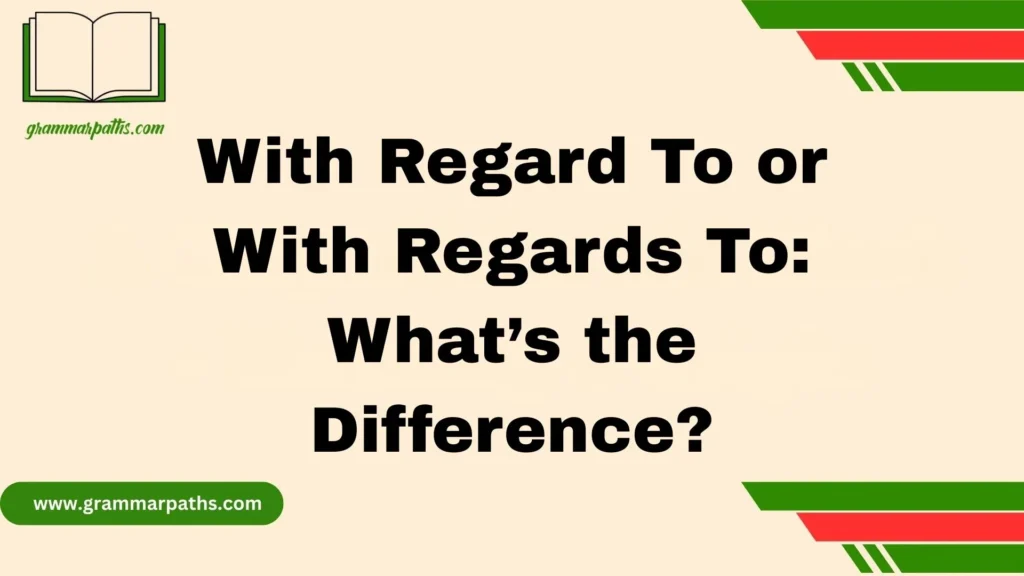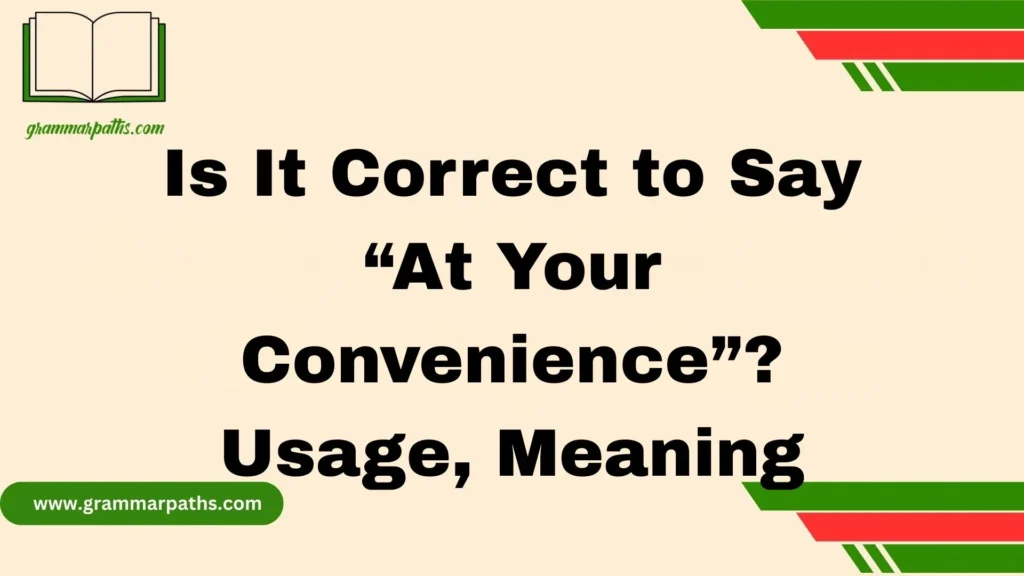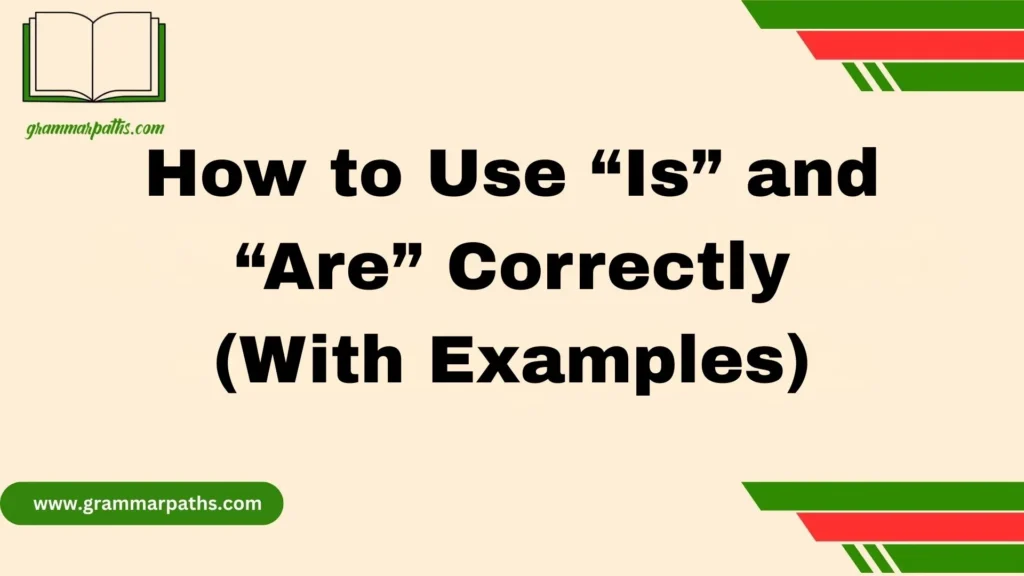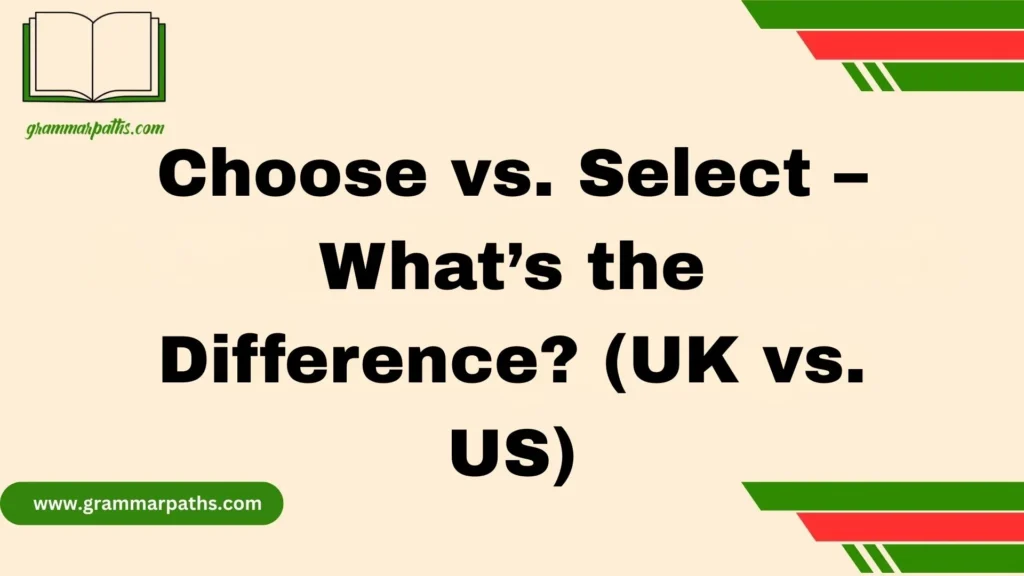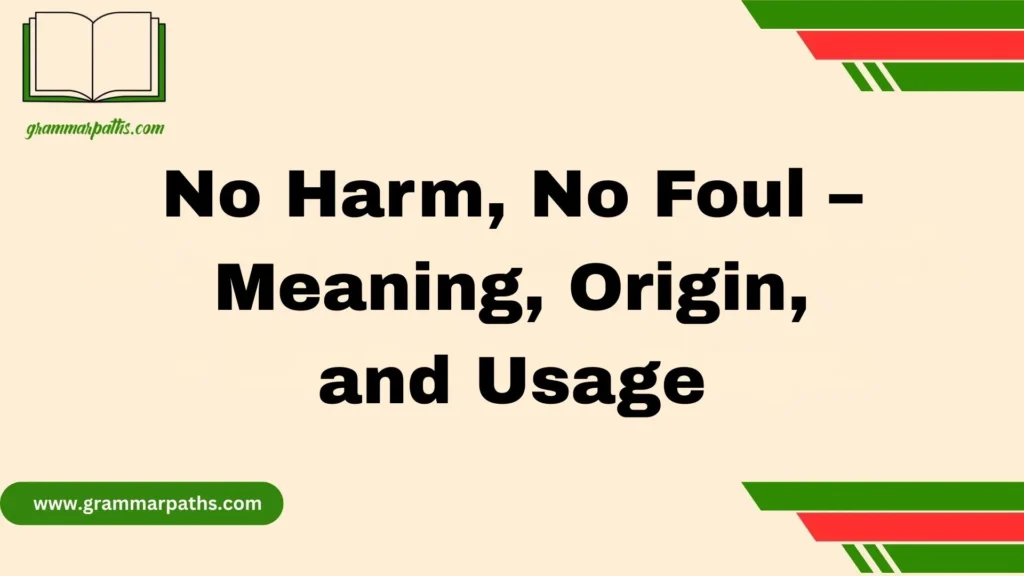The debate between “Imbed” vs. “Embed” often pops up in grammar discussions, especially when writers want to ensure they’re using the correct spelling in professional or academic contexts. While both words are used to mean “to fix firmly into a surrounding mass,” the modern trend overwhelmingly favors “Embed.” According to major dictionaries like Merriam-Webster and Oxford, “Embed” is the preferred spelling, especially in American English.
In contrast, “Imbed” is considered an older or alternate variant that still appears occasionally in literature but is rarely used in tech, journalism, or formal writing. This spelling variation may leave you wondering whether one is more correct, formal, or up-to-date than the other.
People often search for “Embed vs. Imbed usage,” “Is Imbed outdated?” and “Examples of Embed in a sentence” to clarify which version fits best. If you’re aiming for writing clarity, formal tone, or simply following grammatical standards, choosing “Embed” is your safest bet. Let’s explore why this subtle distinction matters and how it affects your writing style.
Definition and Meaning of “Embed” and “Imbed”
First, let’s break down what these words actually mean. Both “embed” and “imbed” mean to fix firmly and deeply into something else. You can imagine embedding a jewel in a ring or embedding a video in a webpage.
Here’s how major dictionaries define them:
| Word | Definition | Usage Example |
| Embed | To insert or fix something firmly and deeply into a surrounding mass or context. | The journalist was embedded with the troops. |
| Imbed | Variant spelling of embed, meaning the same thing but less commonly used in modern writing. | The arrow was imbedded in the tree trunk. |
Both words share the same core meaning, but “embed” has become the preferred spelling in most contexts. The subtle difference lies mainly in style and frequency of use, rather than meaning.
Etymology: Where Did Each Word Come From?
Understanding the origins helps explain why two versions exist.
- Embed traces back to the late 16th century, derived from Middle English “embeden,” which itself comes from Old English “bedd” (meaning bed or place to put something) with the prefix “em-” meaning “in” or “into.”
- Imbed appeared later as a variant spelling, influenced by the prefix “im-” (also meaning “in”) combined with “bed.”
Both forms coexisted since the 18th century, but “embed” gained popularity over time. This is partly because “em-” prefixes were more common and felt natural in English, while “im-” often changes consonants (like impossible, immature), which “imbed” doesn’t.
Today, “embed” dominates. But “imbed” pops up occasionally in older texts or certain regional uses.
Which Is More Common Today? [With Real Data]
To see which word wins in modern usage, let’s check actual data from language corpora and online sources.
| Source | Embed Frequency (per million words) | Imbed Frequency (per million words) |
| Google Books Ngram Viewer (2000–2020) | 75 | 2 |
| Corpus of Contemporary American English (COCA) | 60 | 1 |
| Merriam-Webster Usage Notes | Preferred standard form | Listed as variant |
From this data, “embed” appears roughly 30 to 40 times more frequently than “imbed.” This gap shows how firmly “embed” has established itself in contemporary English. Most style guides and dictionaries flag “embed” as the preferred spelling for clarity and consistency.
Is “Imbed” Wrong? Let’s Set the Record Straight
You might ask: is “imbed” a spelling mistake? The answer is no. “Imbed” is a legitimate variant spelling that has historical roots and is recognized by some dictionaries.
However, because it is rare in today’s usage, many readers might view “imbed” as outdated or incorrect, especially in digital or academic writing. Using “imbed” might confuse readers or appear as a typo.
In practical terms, writers should stick to “embed” unless they are quoting historical texts or following specific stylistic traditions.
Grammar and Syntax Rules: Imbedded vs. Embedded
Past tense and past participle forms cause similar confusion.
- The past tense of “embed” is “embedded.”
- Similarly, the past tense of “imbed” is “imbedded.”
Both forms exist, but “embedded” is overwhelmingly more common. For instance:
- The video was embedded in the webpage. (Correct and common)
- The arrow was imbedded in the wall. (Less common, but correct variant)
| Form | Usage Example | Commonality |
| Embedded | The file is embedded in the email. | Standard and preferred |
| Imbedded | The stone was imbedded in the statue. | Recognized but rare |
To avoid confusion and maintain professionalism, choose “embedded” in all cases.
Pronunciation: Do They Sound Different?
Pronunciation is another point where the two words blend.
Both “embed” and “imbed” sound almost identical in everyday speech:
- IPA for embed: /ɪmˈbɛd/ or /ɛmˈbɛd/ (depending on accent)
- IPA for imbed: /ɪmˈbɛd/
Most native speakers pronounce them the same way, making it impossible to distinguish just by listening.
Therefore, pronunciation will not help decide which to use — focus on spelling and context instead.
“Embed” in the Digital World: Code, Videos, Media
The word “embed” plays a crucial role in technology and digital content. For example:
- Embedding a YouTube video on your website means inserting a small piece of code that displays the video player inside your page.
- Social media platforms use “embed” buttons so users can share posts directly into blogs or news sites.
Important points:
- “Imbed” does not appear in technical jargon or coding documentation.
This exclusivity makes “embed” the only accepted choice when discussing digital content.
Military & Journalism Usage: Embedded Reporters
In military and media circles, “embedded journalism” refers to reporters who are assigned to live and travel with military units during conflicts. This practice began prominently during the Iraq War in 2003.
Key takeaways:
- The term “embedded” is fixed and widely used.
- You won’t find “imbedded journalism” in credible sources or media reports.
- “Embedded” emphasizes a sense of being deeply integrated with a group.
This example reinforces how “embedded” remains the dominant, accepted form across professional fields.
Regional Preferences: US vs. UK English
Does geography affect which form you should use?
| Region | Preferred Form | Style Guide References |
| United States | Embed | Merriam-Webster, AP Style Guide |
| United Kingdom | Embed | Oxford English Dictionary, Cambridge Dictionary |
Both the US and UK overwhelmingly prefer “embed”. “Imbed” is recognized but almost obsolete.
British English sometimes retains older spellings more than American English, but even there, “embed” rules.
Thus, no matter where you write from, “embed” remains the go-to choice.
Writing Advice: Which One Should You Use Today?
To wrap it up, here’s practical guidance:
- Use “embed” and its past tense “embedded” in all modern writing contexts—digital, academic, journalistic, or casual.
- Only use “imbed” when quoting older texts or when you want to reflect a historical style.
- Stay consistent in your spelling to maintain professionalism and clarity.
- Use writing tools like Grammarly or Hemingway Editor to catch inconsistent or uncommon variants.
This approach keeps your writing clear, authoritative, and reader-friendly.
Quick Reference: Embed vs. Imbed Cheat Sheet
| Aspect | Embed | Imbed |
| Meaning | To fix deeply into something | Same meaning (variant) |
| Commonality | Very common, preferred | Rare, archaic |
| Past Tense | Embedded | Imbedded |
| Usage in Technology | Standard (HTML, coding) | Not used |
| Usage in Journalism | Embedded journalism | Not used |
| Regional Preference | US & UK preferred | Obsolete |
| Pronunciation | /ɪmˈbɛd/ (same as imbed) | /ɪmˈbɛd/ (same as embed) |
FAQs About Imbed vs. Embed
What is the difference between imbed and embed?
There is no real difference in meaning—imbed is a less common variant of embed. Both mean to insert something deeply or firmly.
Is it imbedding or embedding in the UK?
In the UK, embedding is the preferred and more widely used spelling, aligning with modern English usage.
What does imbed into mean?
Imbed into means to place or fix something deeply into a surrounding mass, like emotions or objects into a system.
Is imbedded the same as embedded?
Yes, imbedded and embedded are interchangeable, though embedded is the standard form in modern English.
What do you mean by embed?
To embed means to insert something firmly or deeply into a surrounding context—physically, digitally, or metaphorically.
Final Verdict – “Embed” Is the Present and Future
In the ongoing comparison of “Imbed” vs. “Embed,” the verdict is clear: “Embed” is the modern, widely accepted spelling, especially in formal, digital, and academic contexts. While “Imbed” is not technically incorrect, it’s considered an older or alternate form that rarely appears in contemporary writing. If you’re striving for clarity, grammatical precision, and alignment with current language trends, “Embed” is the preferred choice.
Whether you’re crafting a blog post, academic essay, or coding HTML, using the correct and widely recognized spelling enhances your credibility and readability. Most users searching this topic are really looking to understand the differences in spelling, usage in sentences, and which is appropriate for formal writing. So next time you need to insert, fix, or place something firmly—whether words, media, or ideas—go with “Embed.” It’s not just the popular choice; it’s the linguistically correct one for today’s world.

Mia Rose is the passionate writer and founder of GrammarPaths.com, a resource dedicated to helping learners master English grammar, idioms, and writing skills with ease. With a deep love for language and years of experience in teaching and content creation, Mia simplifies complex grammar rules into clear, practical guides that readers can instantly apply.
